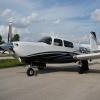Mooney shopping, engine maintenance intervals
-
Members Online
- Beestforwardspeed
- tcal780
- sdmideas
- Bruce Case
- Dwb62
- 802flyer
- TCC
- hammdo
- 201Steve
- navysix
- Stealth Mooney
- Peter T
- Meshach
- Hank
- 1980Mooney
- PeytonM
- Jakes Simmons
- Marc_B
- Schllc
- TNIndy
- da3b242
- Sabremech
- RichB
- Utah20Gflyer
- TeshDar
- Andy95W
- Griswold
- takair
- BillyT0020
- Justin Schmidt
- Dieselman1220
- mgtrevor
- Blaze
- jetdriven


Recommended Posts
Join the conversation
You can post now and register later. If you have an account, sign in now to post with your account.